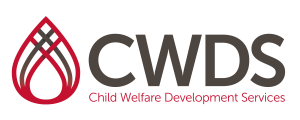CWDS Curriculum
PTSD (Post Traumatic Stress Disorder) in Children and Adolescents
Level: Advanced Practice – Lineworker
Credits: 6
Intended Audience: This workshop can be helpful to persons in any position where they interface with traumatized children or adolescents. Discussion of interventions will be geared to a variety of settings and relationships. Clinical Professionals, direct service residential care workers, foster parents, workers in volunteer capacities, such as CASA workers, and community service workers will all find the information useful in understanding and healing traumatized children/youth.
Intended Objectives:
- Define and explain the essential features of post-traumatic stress disorder.
- Describe various “types” of trauma, and how they differ from each other.
- Outline the general categories of symptoms of PTSD, as well as describe specific symptoms under each category and develop an understanding of how symptoms make sense to victims.
- Describe early understanding of the impact of trauma from classic research (Martin Seligman) and new understandings of specific effects of trauma on brain development and functioning based on current research (Bruce Perry)
- Understand the relationship between trauma and memory, and some of the
problems these issues cause for both clients and workers, including frustration for workers and additional trauma for children during forensic interviews or court appearances. - Describe four different kinds of memory, and how each of these influences accuracy in reporting events and experiences
- Understand differences between implicit and explicit memory and differences influence treatment intervention selection
- Explain some of the features of individual “resiliency”, how these affect the outcomes from a traumatic experience, and how individual differences should be incorporated into treatment planning.
- Describe and implement a variety of short and long term treatment interventions for PTSD and learn how to select an appropriate treatment method and clinician based on client age, developmental stage, memory issues, and presenting symptoms.
- Conduct impact assessments by understanding the necessary components for determining the impact of a traumatic experience
- Outline the three categories of PTSD symptoms and explain how they explain individual differences in responding to traumatic experiences, and learn how to
connect presenting symptom patterns with trauma experienced to both the client and caretakers.
Topics Include:
- Differentiating between crisis, acute trauma, and post trauma responses
- The subjective nature of trauma experiences
- Expanding understanding of trauma throughout history
- How traumatic memories differ from non-traumatic memories
- Differences in symptom development between those experiencing a single trauma and those repeatedly exposed to traumatic experiences
- How inner traumatic responses are expressed in behavior in children of various ages and stages of development
- PTSD and traumatized groups
- Impact of culture of symptom expression
- Using school attendance to help with healing
- Long term treatment stages and interventions
- Specific treatment methods for healing
CalSWEC Competencies Addressed:
1.1 Student demonstrates sensitivity to clients’ differences in culture, ethnicity, and sexual orientation
1.2 Student demonstrates the ability to conduct an ethnically and culturally sensitive assessment of a child and family and to develop an appropriate intervention plan.
2.8 Student understands the dynamics of family violence, and can develop appropriate, culturally sensitive case plans to address these problems.
2.11 Student understands the process of the legal system and the role of social workers and other professionals in relation to the courts.
2.14 Student understands the importance of working together with biological families, foster families, and kin networks, involving them in assessment and planning and helping them cope with special stresses and difficulties.
3.4 Student demonstrates understanding of the influence of culture on human behavior and family dynamics.
3.5 Student demonstrates understanding of how the strengths perspective and empowerment approaches can influence growth, development, and behavior change.
5.1 Student demonstrates knowledge of legal, socioeconomic and psychosocial issues facing immigrants and refugees and is able to devise sensitive and appropriate interventions.
6.4 Student demonstrates skill in interviewing children and adolescents for assessments, interventions, and forensic purposes.
7.2 Student demonstrates the ability to recognize potential for violence, suicide, and other potentially harmful behaviors.
7.5 Student demonstrates understanding of the dynamics of trauma resulting from family conflict, divorce, and family violence.
Posted In:Mental Health & Behavioral Health



